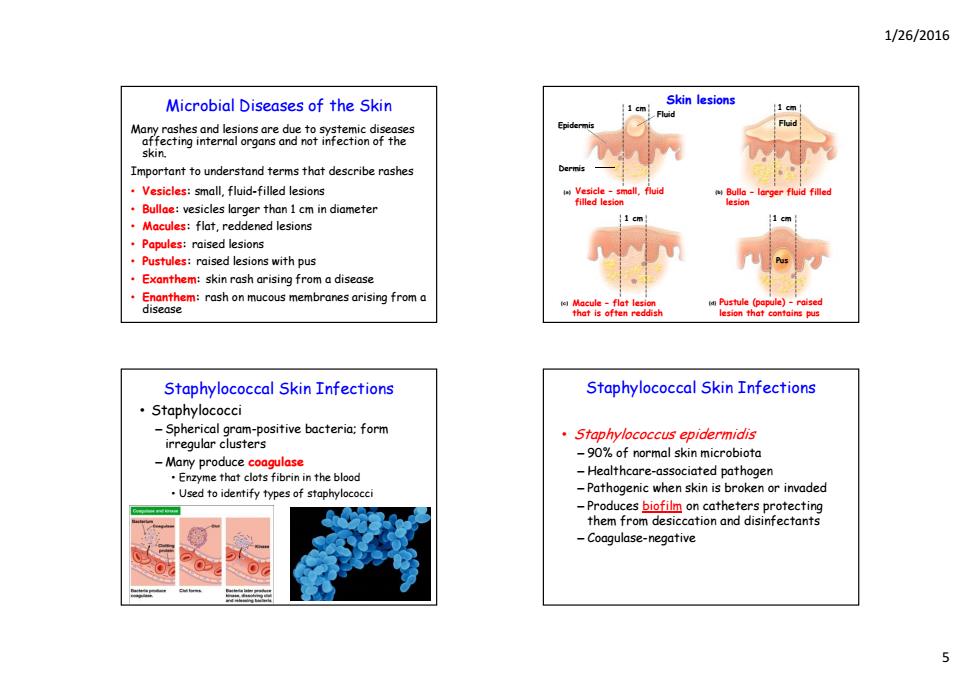正在加载图片...

1/26/2016 Microbial Diseases of the Skin Skin lesions 1 cm 【1cm Fluid Epidermis Important to understand terms that describe rashes Dermis Vesicles:small,fluid-filled lesions Vesicle-small,fluid Bulla-larger fluid filled Bullae:vesicles larger than 1 cm in diameter filled lesion Macules:flat,reddened lesions Papules:raised lesions Pustules:raised lesions with pus Exanthem:skin rash arising from a disease Enanthem:rash on mucous membranes arising from a i Pustule disease contains pus Staphylococcal Skin Infections Staphylococcal Skin Infections Staphylococci -Spherical gram-positive bacteria:form irregular clusters Staphylococcus epidermidis -90%of normal skin microbiota -Many produce coagulase Enzyme that clots fibrin in the blood -Healthcare-associated pathogen Used to identify types of staphylococci -Pathogenic when skin is broken or invaded -Produces biofilm on catheters protecting them from desiccation and disinfectants -Coagulase-negative 1/26/2016 5 Microbial Diseases of the Skin Many rashes and lesions are due to systemic diseases affecting internal organs and not infection of the skin. Important to understand terms that describe rashes • Vesicles: small, fluid-filled lesions • Bullae: vesicles larger than 1 cm in diameter • Macules: flat, reddened lesions • Papules: raised lesions • Pustules: raised lesions with pus • Exanthem: skin rash arising from a disease • Enanthem: rash on mucous membranes arising from a disease Epidermis 1 cm Fluid D i 1 cm Fluid Skin lesions Dermis Vesicle – small, fluid filled lesion Bulla – larger fluid filled lesion 1 cm 1 cm Pus Macule – flat lesion that is often reddish Pustule (papule) – raised lesion that contains pus Staphylococcal Skin Infections • Staphylococci – Spherical gram-positive bacteria; form irregular clusters – Many produce coagulase • Enzyme that clots fibrin in the blood • Used to identify types of staphylococci Staphylococcal Skin Infections • Staphylococcus epidermidis – 90% f l k b % of normal skin microbiota – Healthcare-associated pathogen – Pathogenic when skin is broken or invaded – Produces biofilm on catheters protecting them from desiccation and disinfectants – Coagulase-negative